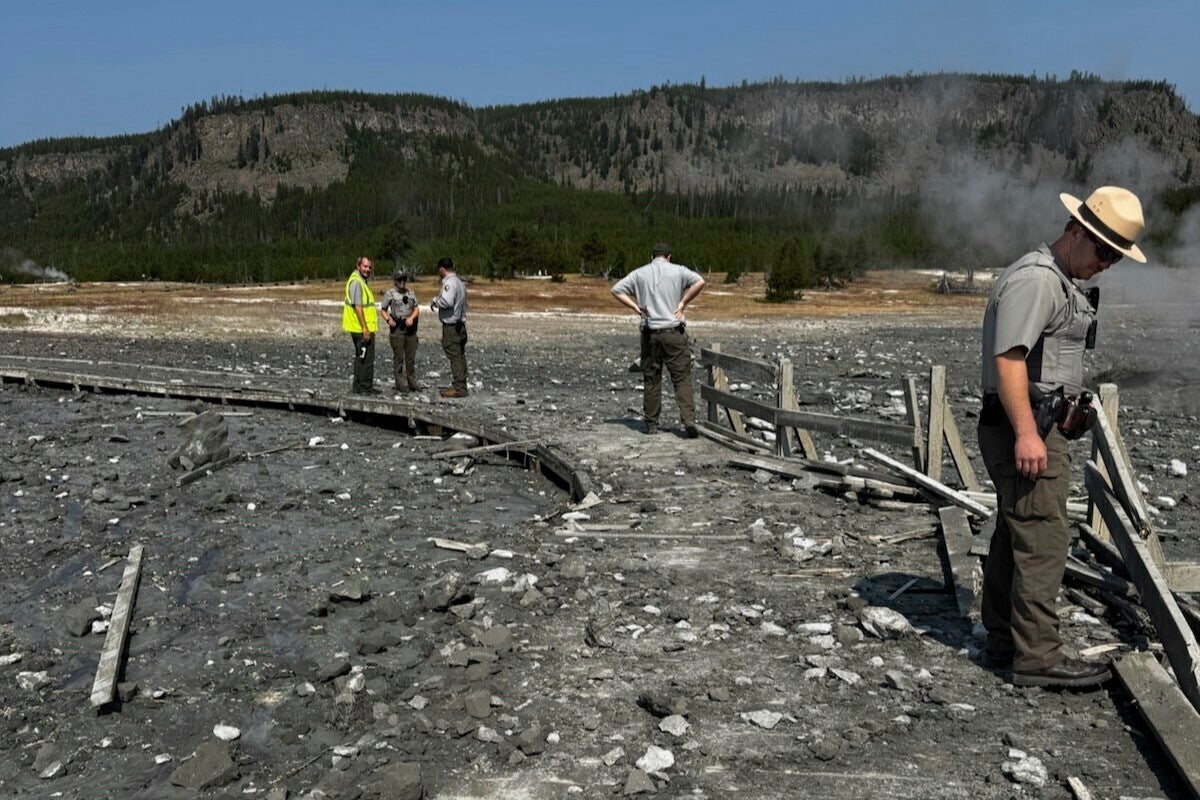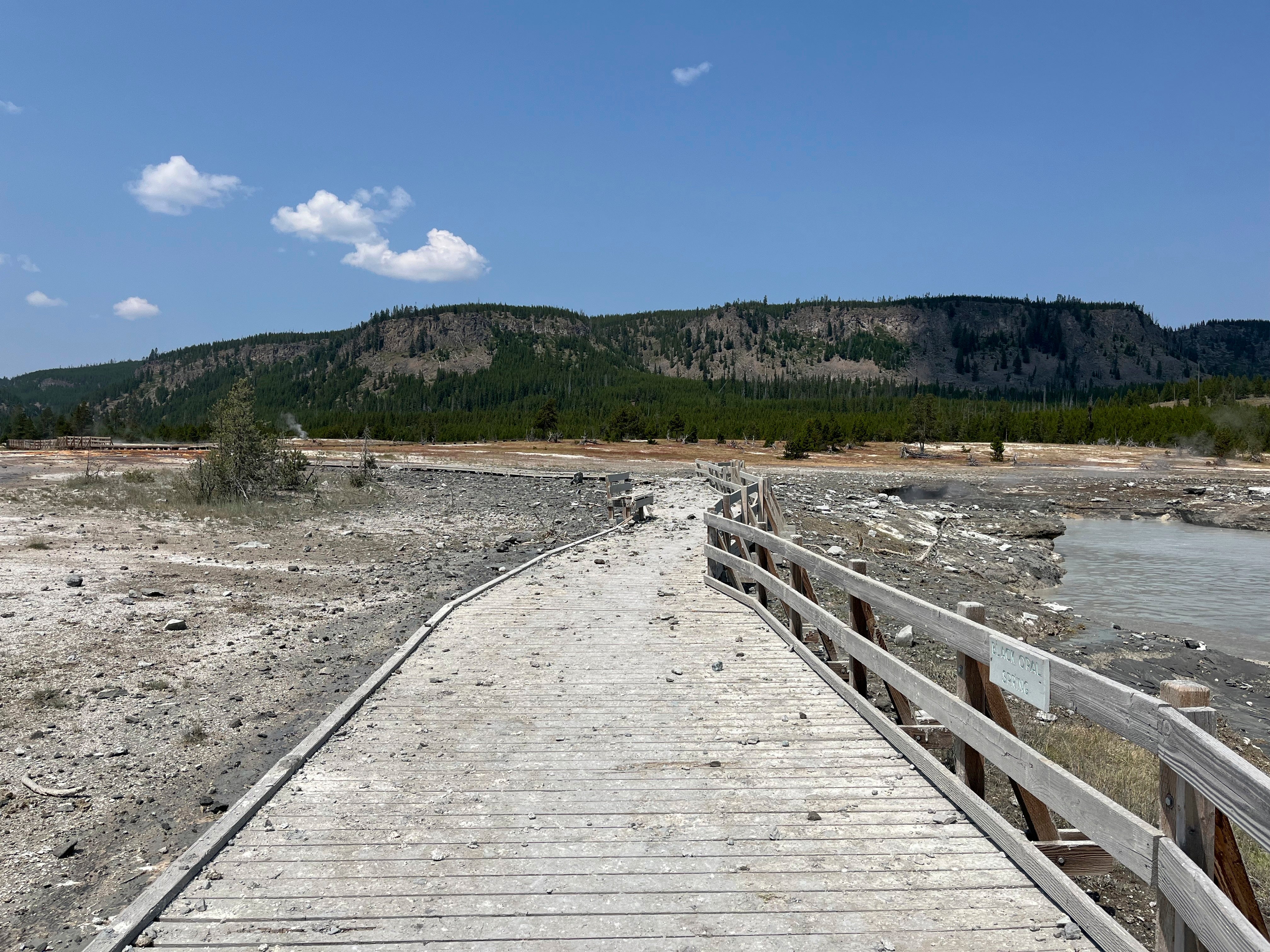Giant Yellowstone explosion sends tourists running for their lives
At least 22 people are known to have died from injuries related to thermal features in and around Yellowstone
Your support helps us to tell the story
From reproductive rights to climate change to Big Tech, The Independent is on the ground when the story is developing. Whether it's investigating the financials of Elon Musk's pro-Trump PAC or producing our latest documentary, 'The A Word', which shines a light on the American women fighting for reproductive rights, we know how important it is to parse out the facts from the messaging.
At such a critical moment in US history, we need reporters on the ground. Your donation allows us to keep sending journalists to speak to both sides of the story.
The Independent is trusted by Americans across the entire political spectrum. And unlike many other quality news outlets, we choose not to lock Americans out of our reporting and analysis with paywalls. We believe quality journalism should be available to everyone, paid for by those who can afford it.
Your support makes all the difference.Tourists were left running for safety on Tuesday after a surprise eruption in Yellowstone National Park.
The incident saw a hot spring shoot steam, water and dark-colored rock and dirt dozens of feet into the sky in front of shocked onlookers.
The hydrothermal explosion happened around 10 am in Biscuit Basin, a collection of hot springs a couple miles (3.2 kilometers) north of the famous Old Faithful Geyser.
Videos posted online showed people watching from a boardwalk as the eruption sprayed and grew in front of them. As water and debris began to fall, they ran to keep clear, some yelling “Back up!" and “Holy cow!” People then turned to watch the spectacle under a huge cloud of steam.
The eruption damaged the boardwalk, an elevated wooden walkway that keeps people off Yellowstone's fragile and often dangerous geothermal areas. Photos and video of the aftermath showed damaged guardrails and boards covered in rock and silt near muddy pools.
No injuries were reported, but the Biscuit Basin area was closed for visitor safety, according to a US Geological Survey statement.
A hydrothermal explosion happens when water suddenly flashes to steam underground. Such blasts are relatively common in Yellowstone.

Though no one was hurt, that’s not always the case with Yellowstone‘s thermal features.
At least 22 people are known to have died from injuries related to thermal features in and around the 3,471-square-mile (9,000-square-kilometer) national park since 1890.
Visitors are warned to stay on the boardwalks and trails in thermal areas, where some of the pools and springs have a thin, breakable crust covering the scalding and sometimes acidic water.
Similar blasts have happened in Biscuit Basin in 2009, 1991 and after the magnitude 7.2 Hebgen Lake earthquake 40 miles (64 kilometers) away in 1959.
Dramatic as it was, the latest was on the small side, according to the statement.

Scientists theorize that a series of hydrothermal explosions created Mary Bay on the northeastern side of Yellowstone Lake some 13,800 years ago. At 1.5 miles (2.4 kilometers) wide, Mary Bay is the world's largest known hydrothermal explosion crater.
Yellowstone is centered on a huge, dormant volcano. The hydrothermal explosion did not indicate new activity within the volcanic system, which remains at normal levels, according to the Geological Survey.
